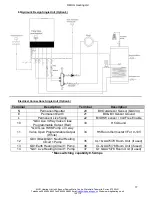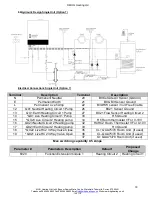
© MHG Heating Ltd
3
MHG Heating Ltd Unit 4 Epsom Downs Metro Centre, Waterfield, Tadworth, Surrey KT20 5LR
Telephone 08456 448802 Fax 08456 448803 Email
Web www.mhgheating.co.uk
140116
1.0 Appliance Type
There arethreebuild types and four outputs within the ProCon range.
Please ensure you have the correct unit for the application and where required located correctly within the
cascade prior to beginning the installation.
1.1 The ProCon H
Range of appliances is designed to be applied to systems requiring direct on boiler
weather compensated heating and priority hot water production via a separate high recovery
calorifier/cylinder.
1.2 The ProCon S
Range of appliances is designed to be applied to systems requiring direct on boiler
weather compensated heating and priority on demand hot water production via an internal plate heat
exchanger.
1.3 The ProCon HS
Range of appliances are designed to be applied to systems requiring direct on boiler
weather compensated heating and priority hot water production via a separate high recovery
calorifier/cylinder, where the diverter valve controlling the production of hot water is within the boiler case.
1.4Supplied Components
All ProCon boilers are supplied with the following components.
QAC 34 Outside Air Sensor (To activate direct on boiler weather compensation)
Wall Mounting bracket and fixing kit.
2.0 Pressure (Safety) Relief Valve
In accordance with the prevailing British Standard 5440/6644, the installer shall install and additionally
required suitably sized Pressure (Safety) Relief Valve. In addition to the one fitted within the boiler.
The location of this valve is important with respect to the applied pressure of the circulation pumps, it is
therefore recommended to locate the Pressure (Safety) Relief Valve on the flow pipe immediately adjacent
to any heat source; furthermore, there must not be any means of isolation between the heat source and the
Pressure (Safety) Relief Valve.


















